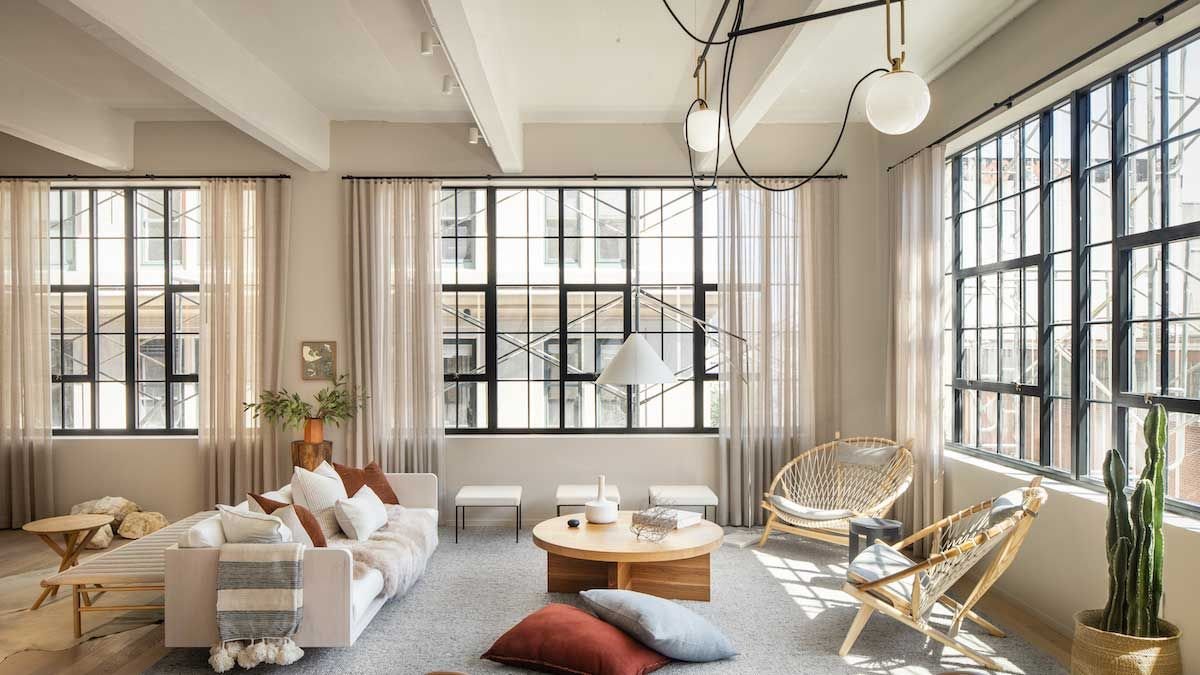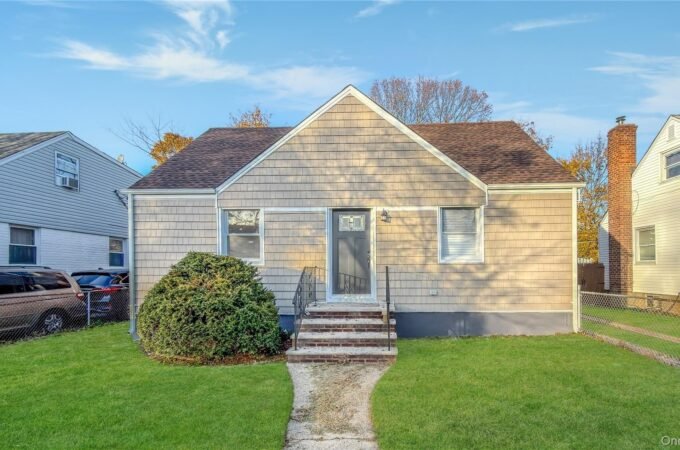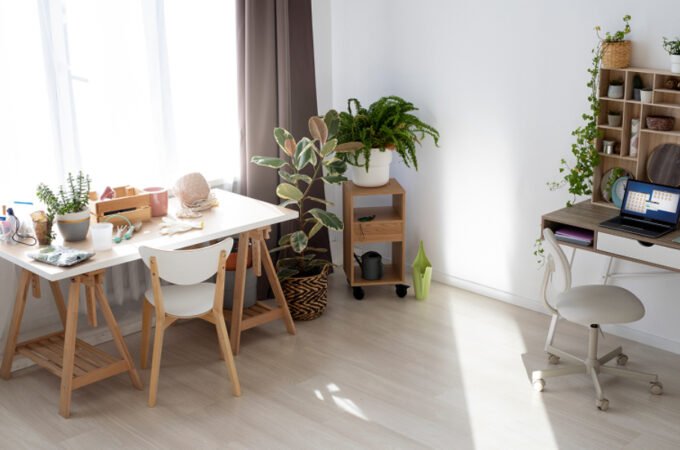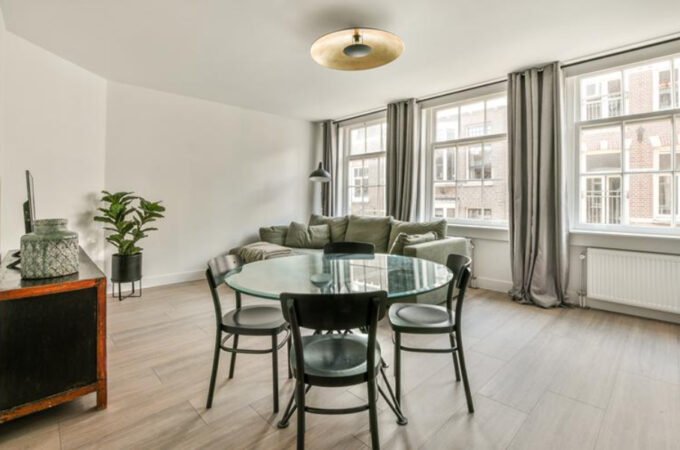
Creative Loft Living Ideas
Table of Contents
ToggleKey Takeaways
- Maximize natural light to enhance the openness of your loft, using architectural features and creative window treatments.
- Incorporate industrial elements to maintain the authentic loft aesthetic, celebrating unique building details.
- Utilize multifunctional furniture to optimize space without sacrificing style or comfort.
- Implement creative storage solutions to keep the area organized, making the most of every niche and vertical surface.
- Personalize your space with art and greenery for a cozy, individualized atmosphere you’ll love coming home to.
Introduction
Loft spaces offer a unique opportunity for creative expression and modern living. With open layouts and distinctive architectural details, residents can create a sanctuary where function meets style. Lofts, like Minneapolis North Loop lofts, blend building character and residents’ comfort. Lofts allow for creative partitioning and uninterrupted sight lines, making the home feel larger and airier. Strategies like smart storage, clever layouts, multifunctional furnishings, and industrial details can elevate daily life. Maximizing loft potential is not just about appearance; it’s about creating a home that feels personal, organized, and inviting, catering to both practical needs and aesthetic sensibilities. The combination of design and utility creates an environment that adapts to your lifestyle, whether you’re hosting guests, pursuing hobbies, or enjoying downtime.
Maximize Natural Light
Lofts often feature high ceilings and large windows—perfect canvases for inviting sunlight into your daily living space. Making the most of this natural gift doesn’t just brighten your home; it enhances your mood and helps everything inside feel more spacious. Installing expansive windows, glass doors, or even architectural skylights can make a dramatic difference, complementing the sense of openness that lofts naturally supply. If modifying your windows isn’t possible, consider replacing heavy drapes with sheer curtains or smart, light-filtering blinds—these keep you connected to the outdoors while ensuring privacy where it counts. Reflective surfaces, whether mirrored walls, glossy tables, or metallic art pieces, can significantly enhance and amplify the amount of available daylight in a room, effectively making the space appear larger, brighter, and more inviting. Interior designers and decorators frequently champion these techniques in renowned publications such as Architectural Digest, where they recommend creatively combining various textures, finishes, and reflective materials to create a convincing illusion of more sunlight filtering throughout the space during the day, thereby enhancing the overall ambiance.
Embrace Industrial Elements
Loft living is celebrated for its urban authenticity and raw beauty, which often comes from embracing original architectural features. Highlighting what makes your building unique—like exposed brick walls, visible steel beams, or even old pipework—preserves the timeworn industrial feel while giving your home character and a sense of history. These elements not only offer texture but also act as conversation pieces that tell the story of your loft’s origins. You can elevate the industrial look even further by incorporating reclaimed wood floors, polished concrete, or metal fixtures. Opt for utilitarian lighting options, such as pendant lamps equipped with vintage Edison bulbs or oversized, factory-style lighting installations, to maintain a cohesive and visually appealing look throughout your entire space. Reputable sources like Dezeen magazine emphasize how incorporating industrial elements can add a unique personality and a sense of timeless allure to your interior design, ensuring that your loft’s distinctive architecture and character never go unnoticed or unappreciated.
Optimize Space with Multifunctional Furniture
Open floor plans in lofts demand smart, versatile furniture choices that adapt to a wide variety of uses and activities. Multifunctional pieces truly work their hardest in flexible, open layouts—such as a sectional sofa that can unfold into a comfortable guest bed, or a coffee table with hidden compartments to store remote controls, magazines, and other small essentials. Consider incorporating foldaway or expandable tables that are perfect for meals or gatherings, which can be neatly tucked away when not in use to save space. Modular furniture and built-in features help you define and create distinct “rooms” within a large open area without relying on solid walls or partitions, keeping everything feeling airy, spacious, yet purposeful. With careful and strategic selection of furniture pieces, you can seamlessly transition your living area from a work zone to a social entertaining space, making your home as adaptable and dynamic as your changing lifestyle and needs.
Implement Creative Storage Solutions
Clutter can quickly accumulate in open and flexible spaces, making it essential to seek out storage solutions that minimize mess while maximizing beauty. Built-in cabinetry, floor-to-ceiling shelving, and under-stair drawers are all great ways to capture storage without closing off the airy feel that makes lofts desirable. Wall-mounted racks or floating shelves keep books, plants, or everyday essentials organized and easily accessible. Think creatively—stairwells, under-bed zones, and even the awkward gaps between support pillars can serve as discreet organizational havens. These often-overlooked spaces, when used thoughtfully, can maximize your storage options without cluttering your living environment. The key is to blend storage with design seamlessly so that nothing feels out of place or intrusive. To gain even more practical insights and innovative ideas, be sure to check out recommendations from House Beautiful, which frequently showcase inventive solutions for small, challenging, and open spaces that can transform the way you organize your home.
Personalize with Art and Greenery
Personalization is at the heart of turning a loft from a simple living area into a true home. Adding art—whether eye-catching statement pieces or collaborative gallery walls—lets your individuality shine and makes your space unmistakably yours. Incorporating houseplants not only purifies the air and enhances wellbeing but also softens industrial lines, adding natural vibrancy to your surroundings. Easy-care species like snake plants or pothos are ideal for busy urbanites or anyone new to plant care. To add further warmth, consider area rugs, decorative cushions, and curated décor that reflect your favorite colors, textures, and patterns. Strategically placed art and touches of greenery bring every corner of your loft to life, making it inviting for you and any visitors who step inside.
Design a Functional Kitchen
Your loft’s kitchen is typically visible from most living spaces within the home, so it should carefully balance both aesthetic appeal and practical functionality. Incorporating open shelving not only allows you to showcase beautiful dishware and artfully arranged ingredients, adding personality to the space, but also keeps essentials within easy reach, making cooking and cleanup more efficient. A kitchen island serves multiple purposes: it acts as a spacious workspace for meal preparation, doubles as a casual breakfast bar for morning coffee or quick bites, and provides additional storage options for kitchen tools and supplies—making it an ideal solution for both everyday living and entertaining guests. Integrated appliances, featuring sleek finishes that seamlessly blend into cabinetry, help maintain a clean, streamlined look throughout your home, enhancing overall visual harmony. Thoughtful kitchen planning considers traffic flow, lighting, and ergonomic design, ensuring that you can cook, socialize, and host gatherings with ease. This approach also helps keep your living area organized, clutter-free, and visually balanced, creating a welcoming environment for family and friends alike.
Create Cozy Nooks
Even in sweeping, open lofts, everyone needs personal sanctuaries for relaxation, work, or contemplation. Establishing small, purpose-built spaces—like a sun-soaked reading nook, a tucked-away desk for remote working, or a secluded media den—brings dimension and comfort. Use room dividers such as bookshelves, airy curtains, or tall plants to create boundaries without interrupting the loft’s signature openness. Layered lighting, with table lamps or string lights, fosters a mellow and inviting ambiance. Whether you carve out a spot for morning coffee or cozy evenings with a book, these nooks ensure every part of your loft feels tailored for comfort and function.
Maintain a Cohesive Color Scheme
Choosing a clear and cohesive color palette is essential for creating visual harmony in an open-plan loft. Soft neutrals—think whites, greys, and earth tones—on walls and large furnishings help the space feel unified and expansive. Drill down your favorite accent hues—such as muted blues, deep greens, or vibrant corals—in artwork, throw pillows, or statement objects. Avoid overcomplicating things with too many loud colors; a restrained, carefully chosen base makes it easier to add or swap accents when your tastes change. Mixing surfaces and textiles—matte and gloss finishes, or velvet and linen—brings subtle intrigue to your interior, ensuring every part of your loft looks intentional. This approach is recommended by design experts, who emphasize the payoff of simplicity and cohesion in large open spaces.
By experimenting with these creative loft living ideas—maximizing light, showcasing industrial elements, investing in multifunctional pieces, enhancing organization, and infusing personality—your loft will evolve into a one-of-a-kind home. Every aspect should reflect your aspirations and habits, resulting in a space that’s equally suited to relaxation, creativity, and community. With thoughtful design, even the most basic loft can become a highly customized sanctuary, perfectly tailored for the way you want to live.
Lynn Place is Vice President of Marketing for SolvChem Custom Packaging Division. She has 30 years of professional experience in the manufacturing industry and specializes in consumer packaged goods, new product development and strategic planning.






